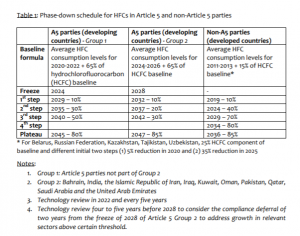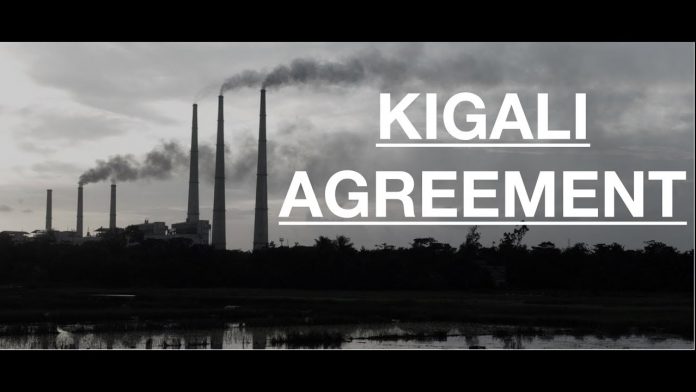This article is written by Gautami Kamat, pursuing a Diploma in Advanced Contract Drafting, Negotiation and Dispute Resolution from LawSikho.com
Table of Contents
Introduction
If there is something that humans depend on the most and entirely owe their survival to, is nature. From the five elements that constitute the human body to the air that we breathe, the food that we consume, and the land on which we live, every aspect of human life is directly or indirectly linked to nature. However, humans have been severely ignorant for decades towards protecting and safeguarding mother nature. We have exploited the facilities provided by nature to such an extent that in the absence of steps towards restoration and conservation, we are prone to face a severe environmental catastrophe shortly.
When this realisation dawned upon humanity, several environmental activists and organisations came together to protect nature. Moreover, countries came together to take international measures towards conserving our environment by the means of various legal protocols and treaties. One such major step taken towards the restoration of the severely depleted ozone layer was the Montreal Protocol on Substances that Deplete the Ozone Layer that has successfully met its objectives over the years and has safeguarded the ozone layer from rapid depletion. It is an international treaty that outlined the steps to be taken towards protecting the ozone layer by phasing out the production of substances that caused its depletion. Since 1st January 1989 i.e. the day on which it came into force, the Montreal Protocol has undergone 9 revisions. The most recent of these revisions being the Kigali Agreement. This article aims at critically analysing the Kigali Agreement by conducting a detailed analysis of the same.
What is the Montreal Protocol?
- The Montreal Protocol on substances that deplete the ozone layer is one of the landmark international agreements. It seeks to safeguard the ozone layer by persuading the signatory nations to regulate the production and consumption of chemicals known as ozone-depleting substances (ODS).
- It was adopted on 15th January 1987.
- From its inception till date, 197 countries have ratified the Montreal Protocol.
- This treaty has evolved with time by the means of nine amendments that have strengthened its ultimate cause.
- It has been viewed to be the most successful United Nation’s environmental agreement, being the only one to have been ratified by every country in the world.
- As a result of the successful implementation of the Montreal Protocol, the ozone layer has started showing signs of recovery. The ozone layer is estimated to regain its pre-1980 levels by the mid 21st century and the ozone hole over the Antarctic region is reckoned to heal by the 2060s.
 An introduction to the Kigali Agreement
An introduction to the Kigali Agreement
- The Kigali Agreement is the most iconic amendment of the Montreal Protocol which has been internationally applauded by scientists and environmentalists for being a crucial measure towards curbing the rising rate of global warming.
- This Agreement particularly aims at phasing out the production and consumption of Hydrofluorocarbons (HFCs) which were first introduced as a substitute to ODSs namely Chlorofluorocarbons (CFCs) and Hydrochlorofluorocarbons (HCFCs).
- It came into force on 1st January 2019 and has been ratified by 119 countries as of 16 April 2021.
- Kigali Agreement legally binds the signatory countries with non-compliance measures.
- It delineates specific targets for the signatory countries to accomplish phasing down of HFCs to be achieved within a specified time limit.
- According to the agreement, these countries are supposed to phase out the production of HFCs by nearly 85% from their existing levels till 2045.
- However, the amendment is yet to be ratified by the United States of America, China, and India, which are the major producers of HFCs.
Throwing light upon the significance of the Kigali Agreement
The Kigali Agreement lays down a definite timeline for phasing down the HFCs.
- It categorises countries into three groups, considering their individual developmental goals, scientific and technological development as well as socio-economic conditions, to implement the phase-down schedule.
- The Article 5 (A5) Countries (Developing Countries) have been categorized as Group 1 (includes a majority of the A5 countries) and Group 2 (includes A5 countries with High Ambient Temperatures)
- Group 3 comprises non- A5 countries (Developed Countries).
- The three groups have different baseline calculations and phase-down schedules (Refer to the chart below).
- While Group 3 is to start phasing down HFC levels by 2019, Group 1 and 2 are supposed to start the process by 2024 and 2028 respectively.
- The amendment also sought to put in place the Import and Export Licencing of HFC by 1st January 2019.

What are HFCs?
- Primarily, HFCs are industrial chemicals used for cooling and refrigeration. HFCs are extremely potent greenhouse gases. Commonly used varieties are generally short-lived climate pollutants that remain in the atmosphere for 15-29 years, causing roughly 3790 times more damage to the climate than carbon dioxide over 20 years.
- HFCs do not have a role to play in the depletion of the ozone layer. However, they have high values of Global Warming Potential (GWP).
- CFCs and HCFCs were used as coolants in refrigerators and air conditioners until scientists found out that the use of these gases is the most crucial reason for the massive ozone depletion.
- While phasing down the consumption and production of CFCs and HCFCs, HFCs were used as substitutes, since these gases did not deplete the ozone layer.
- However, it was later found out that HFCs have higher Global Warming Potential (GPW) values than Carbon Dioxide, which would mean that injudicious and unmonitored use of HFCs would inevitably lead to an increase in global temperatures, accelerating the global warming phenomenon.
The steps to be taken for the successful implementation of the Kigali Agreement
- If successfully implemented by every signatory nation, the Kigali Agreement has been projected to prevent the global temperatures from rising by 0.5° Celsius by the end of the 20th Century.
- The agreement demands countries to commit to phasing down HFCs by 80-85% over 30 years, which is estimated to avoid about 70 billion tonnes of carbon dioxide equivalent emissions by 2050.
- The agreement in alignment with the goal of adopting green technologies can bring a substantial improvement to the environment at a global level.
Further, commitment alone would not suffice for such ambitious goals. Universal ratification along with the correct estimation of emissions and subsequent monitoring is imperative to ensure the compliance of all nations with the agreement. These are the challenges that the successful implementation of the Kigali Agreement faces.
Challenges faced
- As far as universal ratification is concerned, as of 2021 only 119 countries have ratified the agreement thereby exhibiting thorough compliance with it.
- Moreover, the major producers of HFC-23 namely India, China, and the US have not ratified the agreement, which raises serious concerns.
- The recent news, however, shows signs of ratification by China and the US. Chinese President Xi Jinping has announced that China will move towards ratification of the agreement. Moreover, under the presidency of Joe Biden, America is also taking steps towards ratification. Ratification by the US and China would serve as encouragement for other countries, especially India, to step towards ratification.
- Parties to the Kigali Agreement have agreed to destroy HFC-23, which arises as a byproduct during the chemical manufacturing process, “to the extent practicable using technology approved by the parties”. They have also committed to reporting on the HFC-23 levels generated as a byproduct during the manufacture of HCFCs.
- However, scientists suggest with evidence that the countries have not been able to estimate their HFC emission levels correctly. For instance, from 2008-10, swiss scientists estimated emissions of Italy to range from 26-56 metric tonnes of HFC-23 annually. On the contrary, the official Italian inventory estimated the emissions to be just 2-3 metric tonnes. This indicated serious flaws in the estimation of the correct HFC-23 emission levels.
- In 2020, a discrepancy was reported between the claims made and the actual emission levels of China and India. This came after the two countries reportedly announced to have eliminated atmospheric releases of HFC-23 by 2017, but scientists continued to find the rising levels of the gas in the atmosphere.
- Scientists worldwide are constantly trying to improve and expand HFC monitoring systems which will enable scrupulous monitoring of emission levels of the countries thereby ensuring that the agreement is not being violated.
- Another challenge that the agreement encounters is that of finding and manufacturing potential substitutes to HFCs. On the brighter side, this pushes the industries to search for climate-friendly refrigerants and coolants. The recent generation of coolants, the Hydrofluoroolefins (HPOs) are ozone friendly and they do not cause global warming either. Scientists have suggested that switching to HFOs would be efficient to decrease the usage of HFC-23.
How has India responded to the Kigali Agreement?
- India demonstrated a very enthusiastic approach towards achieving its goals as marked by the Kigali Agreement.
- The challenge is to align these goals with the targets of the Make in India initiative to remain competitive in the world market.
- Financial challenge is attributed to investment in research and technology towards finding better alternatives for HFC-23 or to buy such alternatives from other countries, both of which would significantly raise the cost of production.
- India is yet to develop adequate technology required for researching and manufacturing of alternatives of HFCs, without which domestic industries in India would not stand a chance in the global market amidst the developed countries, some of which have already started using the alternatives by using their sound technological knowledge.
- What also needs to be considered is the high temperatures in the country that increase the demand for air conditioners. What further contributes to this demand is the rising numbers in the middle-class category.
- Yet, the country as a responsible nation has voluntarily ordered to stop the production of HFC-23 as a byproduct of commonly used refrigerants. The projected reduction in emission levels of HFC-23 over the next 15 years is by 100 million tonnes equivalent of carbon dioxide.
Conclusion
The Kigali Amendment to the Montreal Protocol embarks on a journey to reduce HFC emissions worldwide thereby arresting the ever-increasing rate of global warming. It is undoubtedly the most remarkable step taken towards reducing the rise in global temperatures by the end of the century. The agreement has to endure numerous challenges towards accomplishing its goals. Ratification by all the countries of the world, correct estimation of levels of HFC emissions, developing extensive monitoring systems to keep a constant check on atmospheric levels of HFC-23, and finding viable alternatives to HFCs are some of the known hurdles. Thorough compliance by the developing countries would largely contribute to the success of the Kigali Agreement.
References
- https://www.aljazeera.com/news/2016/10/16/kigali-deal-agreement-reached-to-phase-out-hfcs/
- https://science.thewire.in/environment/as-nations-announce-new-climate-goals-what-lies-in-the-montreal-protocols-future/
- https://www.civilsdaily.com/kigali-agreement-prospects-and-issues/
- https://ozone.unep.org/kigali-amendment-implementation-begins
- https://ec.europa.eu/clima/sites/clima/files/faq_kigali_amendment_en.pdf
- https://www.ccacoalition.org/fr/slcps/hydrofluorocarbons-hfcs
Students of Lawsikho courses regularly produce writing assignments and work on practical exercises as a part of their coursework and develop themselves in real-life practical skills.
LawSikho has created a telegram group for exchanging legal knowledge, referrals, and various opportunities. You can click on this link and join:
 Serato DJ Crack 2025Serato DJ PRO Crack
Serato DJ Crack 2025Serato DJ PRO Crack









 Allow notifications
Allow notifications



